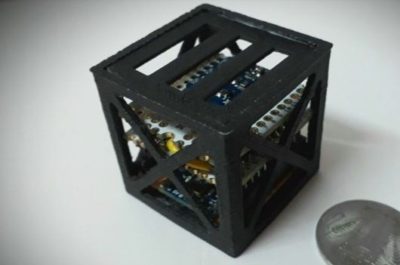
On June 21, 2017, American Space Agency NASA launched the world’s smallest and lightest satellite, dubbed KalamSat, which was built by an Indian teen Rifath Sharook. The launch of the satellite was accomplished from Wallops Island. The total flight time of the rocket was 240 minutes post launch. The satellite was separated 125 minutes after lift-off and operated for 12 minutes in a micro-gravity environment of space.
Rifath Sharook, 18, comes from Tamil Nadu’s Pallapatti area, and his satellite weighs just 64 grams. This satellite was selected by NASA in ‘Cubes in Space’ competition (organized by NASA and ‘I Doodle Learning’ organization), where the American space agency gave participants the challenge of creating an experiment weighing exactly 64 grams and fitting into a four-cm cube. Sharook is a brilliant student and has demonstrated his capabilities in the past years. Two years back, in 2015, he had launched a 1200g helium weather balloon from a ground in Kelmabakkam. Rifath also has an aim of setting up a private space organization in India.
KalamSat is named after former president of India, Dr. APJ Abdul Kalam. Sharook built this satellite using 3D printing technique to demonstrate the performance of 3-D printed carbon fiber. The satellite weighs just 64 grams and is primarily made of reinforced carbon fiber polymer. Some components of the satellite made in India while some others were foreign-made. The satellite has eight sensors to measure rotation, acceleration, and the magnetosphere of the earth. Its nano Geiger Muller counter will measure radiation in space.
The satellite was funded by an organization called ‘Space Kidz India’. Rafith, the inventor of KalamSat, is a member of this organization since class 8th.
On June 21, 2017, when the Kalamsat was being launched in space, Rifath Sharook’s team of six was celebrating the moment. He revealed to ANI that his team has created history as this is the first time that 3-D printing technology is being used in space. The world’s lightest satellite fell into the sea. NASA will now recover the satellite from the sea and send it back to its creator for decoding the data.
